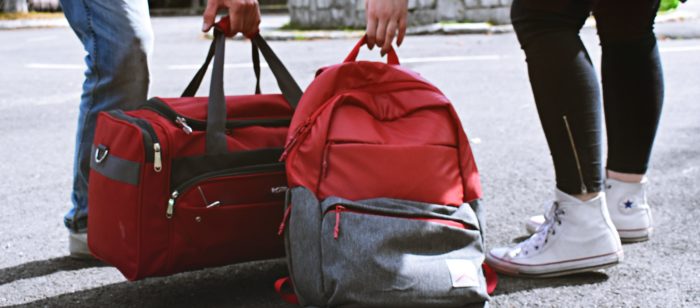Originally published in American City Business Journals
By Sean Claessen
I can hail a ride literally at the touch of a button. I can order whatever kind of food I want to be delivered to wherever I am.
I don’t even have to decide what I want to watch anymore, because it’s recommended to me.
But the overall airport experience has changed little in the last 30 years, and the changes that have occurred have mostly made things more stressful and tedious.
Today’s airport experience is defined by longer security lines, crowded planes with shrinking leg room, and food options spread seemingly miles apart across terminals. And like it or not, customers’ airport expectations still begin and end with the airlines.
Based on our research, customers tell us it’s the experience after booking that needs attention.
Here are four improvements that will earn airlines loyal customers who will come back more often, spend more, and pay premiums for the convenience these services offer:
1. Print bag tags at home. Among the numerous moments at the airport that are tedious, stressful and anxiety-inducing, dealing with luggage is among the top. Checking in is an experience that consumers say is of high importance but one where most airlines do not perform well.
There’s no need to reinvent the wheel here. Some airlines are making it easier for travelers to perform some check-in functions while they’re at home, in a restful moment, rather than endure a juggling act at the airport.
Lufthansa, for example, now accepts BAGTAG, an electronic device that acts as your tag. It can be attached at home or at your hotel, updated via an app, and won’t tear or get damaged. And while many airlines have made it easy to print tags at the airport at self-service kiosks, it’s still an extra step. BAGTAG allows travelers to drop their bags off as soon as they walk in the door.
What if you could pull your car up to the door and have it automatically whisked away and parked for you from there? It sounds like science fiction, but there are already tests underway where robots are parking cars for passengers so they can get on with their journey. If you’re traveling in or out of Gatwick Airport — the second-busiest airport in the UK — you can now order a robot valet.
What if an airline made the brave step of improving an experience that ostensibly is none of their business, like parking? They could charge a premium, give loyalty members a discount and radically change customer expectations in the process.
3. Food and drink delivery. We’ve all been there: searching for some decent food, walking past one cluster of restaurants then the next only to discover what we really want is in an entirely different terminal. But what if I sould have whatever I wanted to eat or drink delivered to me at my gate, instead of having to chase it down?
This is exactly the experience Deliveroo is creating at Dubai International Airport, where passengers can find a seat near their gate, order food on an app and have it delivered within minutes. It’s the Uber Eats of the airport, and Deliveroo has since expanded beyond Dubai.
This is exactly the type of disruptive model that will continue to gain steam. But what if it was included in my airline’s loyalty program? I’d pay an upgrade for that.
4. Reserved overhead bin space. I don’t want to spend any more time on a plane than I absolutely have to, yet I have to be one of the first on the plane if I want to make sure I have a spot for my bag. This immediately makes boarding the plane more stressful.
As a loyal customer, I actually want to be the last person on the plane and still know there’s a place for my bag. And I would be willing to pay extra for the privilege.
Some carriers, like American Airlines, are already taking steps towards offering this service in restricted areas by adding numbered placards to overhead bins.
Imagine the day when there’s no need for tagging bags at the gate, because everyone already has their space reserved and the airline already knows exactly how many bags will be on board before anyone steps foot on the plane.
In an industry where many customer experiences have reached parity, such as the booking process, there is still ample opportunity to provide meaningful, positive moments to customers.
We estimate getting even one of these moments right could prompt consumers to spend more than $500 more per month on credit cards tied to airline loyalty. Plus, each one of these moments offers the opportunity to unlock an entirely new revenue stream.
By becoming more service-oriented and delivering on customer expectations, airlines and air travel will finally be brought into the modern age.
Sean Claessen is Executive Vice President of Strategy & Innovation for Bond Brand Loyalty.

